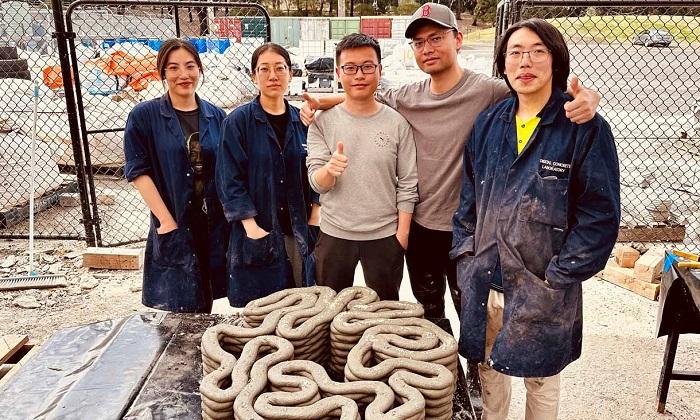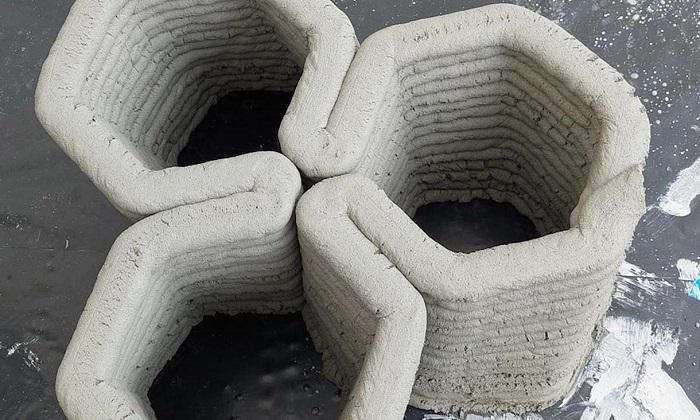A new concrete mix has been created by researchers using graphene oxide that not only adds strength to 3D printed concrete but also makes it easier to print, and potentially builds ‘smart’ walls that can monitor cracks.
The joint study by researchers from RMIT University and University of Melbourne investigated the effects of graphene oxide on the printability and compressive properties of 3D printed concrete. The research reveals that adding graphene oxide, a nanomaterial commonly used in batteries and electronic gadgets gave concrete electrical conductivity and increased the strength of concrete by up to 10%.

RMIT students Thanh Ha Nguyen, Wen Si, Junli Liu, Kien Nguyen and Shuai Li with a 3D printed concrete structure
According to Jonathan Tran, research supervisor and associate professor at RMIT’s School of Engineering, this concrete had the potential to create ‘smart’ buildings where walls can act as sensors to detect and monitor small cracks.
Currently, non-destructive methods such as ultrasonic or acoustic sensors are used in the construction industry to detect large cracks in concrete structures; however, detecting smaller cracks early is still a challenge.
“The equipment for these methods is often bulky, making it difficult to regularly use for monitoring very large structures like bridges or tall buildings,” says Tran. “But the addition of graphene oxide creates the possibility of an electrical circuit in concrete structures, which could help detect structural issues, changes in temperature and other environmental factors.”
Tran says graphene oxide can potentially make 3D printed concrete more viable in the construction industry, which could have positive impacts on cost and sustainability.
“Current concrete structures are created using formwork, which is where you create a mould before pouring fresh concrete mixture into it. Formwork requires a lot of labour, time and money, and it often creates a lot of waste.
“With 3D printed concrete, not only does it help save time, money and labour, but you can also create more complex structures and reuse some construction waste in cement-based materials.”

The layer-by-layer printing of 3D printed structures can potentially lead to weaker bonds between each layer; therefore, the addition of graphene oxide in concrete makes it easier to extrude, creating better inter-layer bonding, which can also help maximise strength.
Lead researcher RMIT PhD candidate Junli Liu notes that the strength of the concrete could be increased if the bond between graphene oxide and the concrete mixture was improved.
The researchers tested two dosages of graphene oxide in cement and found the lower dosage was stronger than the higher one. Adding too much graphene oxide could impact the strength and workability of the concrete mix, potentially causing issues with printability, strength and durability, says Tran.
The next phase of the research will study the electrical conductivity of graphene oxide in concrete and test its viability as a potential smart material.
The research study titled ‘Exploration of using graphene oxide for strength enhancement of 3D-printed cementitious mortar’ was published in Additive Manufacturing Letters. (DOI: 10.1016/j.addlet.2023.100157). Junli Liu, Phuong Tran, Thusitha Ginigaddara and Priyan Mendis are co-authors of the paper.

